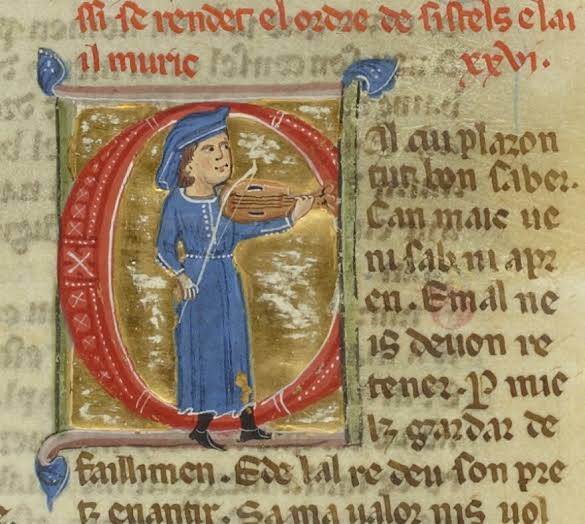
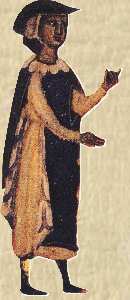
フランス音楽小史
French music history


★ フランスには、10世紀にはすでにヨーロッパで際立った存在であった豊かな音楽の歴史がある。フランス音楽は中世に統一されたスタイルとして誕生し、ノー トルダム楽派の作曲家たちを中心に発展した。このグループはモテットという特定の音楽形式を発展させた。中世後期には、トルバドゥールとトルヴェールがフ ランス中を巡業し、多くのオリジナル曲を作曲・演奏した。14世紀には、世俗的な歌に焦点を当てたアルス・ノヴァとアルス・スブティリオルのスタイルが誕 生した。ヨーロッパがルネサンス時代へと移行するにつれ、フランスの音楽は洗練されていった。ヨーロッパの他の地域におけるフランス音楽の人気はやや低下 したが、この時代には、人気のシャンソンと古いモテットがさらに発展した。フランス音楽の中心はパリからブルゴーニュへと移り、ブルゴーニュ楽派の作曲家 たちに追随した。バロック時代には、カルヴァン派の影響により音楽は簡素化され、制限された。宮廷で好まれた世俗的な音楽である「エア・ド・クール」がフ ランス音楽の主要なスタイルとなった。
| France has a rich
music history that was already prominent in Europe as far back as the
10th century. French music originated as a unified style in medieval
times, focusing around the Notre-Dame school of composers. This group
developed the motet, a specific musical composition. Notable in the
high Middle Ages were the troubadours and trouvères soon began touring
France, composing and performing many original songs. The styles of ars
nova and ars subtilior sprung up in the 14th century, both of which
focused on secular songs. As Europe moved into the Renaissance age, the
music of France evolved in sophistication. The popularity of French
music in the rest of Europe declined slightly, yet the popular chanson
and the old motet were further developed during this time. The
epicenter of French music moved from Paris to Burgundy, as it followed
the Burgundian School of composers. During the Baroque period, music
was simplified and restricted due to Calvinist influence. The air de
cour then became the primary style of French music, as it was secular
and preferred by the royal court. |
フランスには、10世紀にはすでにヨーロッパで際立った存在であった豊
かな音楽の歴史がある。フランス音楽は中世に統一されたスタイルとして誕生し、ノートルダム楽派の作曲家たちを中心に発展した。このグループはモテットと
いう特定の音楽形式を発展させた。中世後期には、トルバドゥールとトルヴェールがフランス中を巡業し、多くのオリジナル曲を作曲・演奏した。14世紀に
は、世俗的な歌に焦点を当てたアルス・ノヴァとアルス・スブティリオルのスタイルが誕生した。ヨーロッパがルネサンス時代へと移行するにつれ、フランスの
音楽は洗練されていった。ヨーロッパの他の地域におけるフランス音楽の人気はやや低下したが、この時代には、人気のシャンソンと古いモテットがさらに発展
した。フランス音楽の中心はパリからブルゴーニュへと移り、ブルゴーニュ楽派の作曲家たちに追随した。バロック時代には、カルヴァン派の影響により音楽は
簡素化され、制限された。宮廷で好まれた世俗的な音楽である「エア・ド・クール」がフランス音楽の主要なスタイルとなった。 |
| Medieval music Main article: Medieval music Some of the earliest manuscripts with polyphony are organa from 10th century French cities like Chartres and Tours.[citation needed] The Saint Martial school is especially important, as are the 12th century Parisian composers at the Notre-Dame school from whence came the earliest motets. Secular music in medieval France was dominated by troubadours, jongleurs and trouvères, who were poets and musicians known for creating forms like the ballade (forme fixe) and lai. The most famous of the trouvère was Adam de la Halle. |
中世音楽 詳細は「中世音楽」を参照 多声音楽の最も古い写本は、シャルトルやトゥールといった10世紀のフランス都市のオルガヌムである。サン・マルシャル楽派は特に重要であり、初期のモ テットを生み出したノートルダム楽派の12世紀のパリの作曲家たちも同様である。中世フランスの世俗音楽は、トルバドゥール、ジョングルール、トルヴェー ルといった吟遊詩人や音楽家たちによって支配されていた。彼らは、バラード(フォルム・フィクス)やライのような形式を生み出したことで知られる詩人であ り音楽家であった。トルヴェールの中でも最も有名なのはアダム・ドゥ・ラ・アルである。 |
| Saint Martial school Main article: Saint Martial school The Saint Martial school, named after the Abbey of Saint Martial around which it was centered, was an important group in the development of early French music. The school created various forms of music based on poetry. These forms of music were often organa consisting of elaborate proses and tropes. Important composers from this school include Roger de Chabannes and his nephew and student Adémar de Chabannes. The manuscripts written by these two became very popular and included early uses of troper-prosers and sequentiaries.[1] The duo also pioneered a new form of notation for their work that collected new forms of liturgical poetry.[2] While polyphony was not invented at the Saint Martial school, the group developed it extensively and brought it into common use. All of these contributions made the Saint Martial school an important precursor to the later Notre-Dame school. |
サン・マルシャル楽派 詳細は「サン・マルシャル楽派」を参照 サン・マルシャル楽派は、その中心となったサン・マルシャル修道院にちなんで名付けられた楽派であり、初期フランス音楽の発展において重要な役割を果たし た。この楽派は詩を基盤としたさまざまな音楽形式を生み出した。これらの音楽形式は、しばしば手の込んだプロセとトロペで構成されるオルガヌであった。こ の楽派の重要な作曲家には、ロジェ・ド・シャバンヌと、その甥であり弟子であるアデマール・ド・シャバンヌがいる。この2人が書いた写本は非常に人気があ り、修辞法と連続法の初期の使用例も含まれていた。[1] この2人はまた、典礼詩の新しい形式を集めた作品のために、新しい記譜法を開拓した。[2] サン・マルシャル楽派では多声音楽は発明されなかったが、このグループは多声音楽を広範囲に発展させ、一般的な使用に持ち込んだ。これらの貢献すべてによ り、サン・マルシャル楽派は後のノートルダム楽派の先駆者として重要な存在となった。 |
| Notre-Dame school Main article: Notre-Dame school The Notre-Dame school was a group of composers who used a style of polyphonic organum that flourished at Paris' Notre-Dame Cathedral between about 1170 to 1250. The only composers whose names have survived are Léonin and Pérotin. These two are believed to have written the Magnus Liber, a comprehensive book of organum.[citation needed] |
ノートルダム楽派 詳細はノートルダム楽派を参照 ノートルダム楽派は、1170年頃から1250年頃にかけてパリのノートルダム大聖堂で栄えたポリフォニーのオルガヌムの様式を用いた作曲家グループであ る。 その名が現在まで伝わっている作曲家はレオナンとペロタンだけである。 この2人はオルガヌムの総合的な書物である『大オルガヌム』を書いたと考えられている。 |
| Motet Main article: Motet The motet, a lyrical piece of music in several parts,[3] evolved from the Notre-Dame school when upper-register voices were added to discant sections, usually strophic interludes, in a longer sequence of organum.[4] Usually the discant representing a strophic sequence in Latin which was sung as a descant over a cantus firmus, which typically was a Gregorian chant fragment with different words from the descant. The motet took a definite rhythm from the words of the verse, and as such appeared as a brief rhythmic interlude in the middle of the longer, more chantlike organum. |
モテット 詳細は「モテット」を参照 モテットは、複数のパートからなる叙情的な楽曲である。[3] ノートルダム楽派から発展し、オルガヌムの長いシーケンスにおいて、通常はストローフ形式のインターリュードであるディスカントセクションに高音域の声部 が追加された。[4] 通常、ディスカントはラテン語でストローフ形式のシーケンスを表し、カントゥス・フィクス(cantus firmus)の上に歌われる。カントゥス・フィクスは通常、グレゴリオ聖歌の断片であり、ディスカントとは異なる言葉が用いられる。モテットは、節の言 葉から明確なリズムを取り、オルガヌムの長い部分の途中に短いリズムの挿入部分として現れる。 |
| Troubadours Main article: Troubadour  Bernard de Ventadour, a well-known troubador In the 12th century, traveling noblemen and musicians called troubadours began traveling southern France. Inspired by the Code of Chivalry, troubadours composed and performed vernacular songs, in contrast to the older tradition dating back to the 10th century of goliards. The tradition seems to have originated in Aquitaine, and troubadours became most prominent in Europe in the late 11th and early 12th centuries.[5] Provence was the region with the most troubadours, but the practice soon spread north and aristocrats like Adam de la Halle became the first trouvères. Contemporaneous with the troubadours, the trouvères, another itinerant class of musicians, used the langue d'oïl, while the troubadours used langue d'oc. This period ended abruptly with the Albigensian Crusade, which decimated southern France.[6] |
トルバドゥール 詳細は「トルバドゥール」を参照  著名なトルバドゥール、ベルナール・ド・ヴァンタドゥール 12世紀には、トルバドゥールと呼ばれる旅する貴族や音楽家たちが南フランスを旅するようになった。騎士道にインスピレーションを受けたトルバドゥールた ちは、10世紀にまで遡るゴリアードの古い伝統とは対照的に、土地言葉の歌を作詞作曲し、披露した。この伝統はアキテーヌで始まったようで、11世紀後半 から12世紀初頭にかけて、トルバドゥールはヨーロッパで最も著名な存在となった。[5] プロヴァンスはトルバドゥールが最も多かった地域だが、その慣習はすぐに北部にも広がり、アダム・ドゥ・ラ・アールのような貴族が最初のトルヴェールと なった。トルバドゥールと同時代に、もう一つの放浪楽師階級であるトルヴェールは、トルバドゥールがオック語を使用していたのに対し、ロワールフランス語 を使用していた。この時代は、南フランスを荒廃させたアルビジョア十字軍によって突然終わりを告げた。[6] |
| Ars nova and ars subtilior Main articles: Ars nova and ars subtilior Two of the major developments in music in the 14th century occurred in France. The first was ars nova, a new, predominantly secular style of music. It began with the publication of the Roman de Fauvel[7] and culminated in the rondeaux, ballades, lais, virelais, motets, and single surviving mass of Guillaume de Machaut, who died in 1377. Philippe de Vitry, also a representative of ars nova, invented an improved system of musical notation and may have been the first composer of the isorhythmic motet. The other important development was the extremely complex and sophisticated art of secular song which flourished in Avignon at the very end of the 14th century, ars subtilior. Ars subtilior immediately followed ars nova, and as the Latin definition suggests, this style was subtler than the earlier works. Ars subtilior was also even more complex, making it difficult to sing and most popular among music specialists. |
アルス・ノヴァとアルス・スブティリオル 詳細は:アルス・ノヴァとアルス・スブティリオル 14世紀における音楽の主な発展の2つはフランスで起こった。1つ目はアルス・ノヴァであり、新しい、主に世俗的な音楽スタイルであった。それは『ローラ ンの歌』[7]の出版から始まり、1377年に亡くなったギヨーム・ド・マショーの残したロンドー、バラード、レ、ヴィルレー、モテット、そして現存する 唯一のミサ曲に集大成された。フィリップ・ド・ヴィトリもアルス・ノヴァの代表的な作曲家であり、改良された楽譜の記譜法を考案し、イソリズム・モテット の最初の作曲家であった可能性がある。 もう一つの重要な発展は、14世紀の終わりにアヴィニョンで栄えた、きわめて複雑で洗練された世俗歌曲の芸術、アルス・スブティリオールである。アルス・ スブティリオールはアルス・ノヴァの直後に登場し、そのラテン語の定義が示すように、このスタイルはそれ以前の作品よりも繊細であった。アルス・スブティ リオールはさらに複雑で、歌うのが難しく、音楽専門家たちの間で最も人気があった。 |
| Renaissance music The move of the center of musical activity from Paris to Burgundy defines the beginning of the musical Renaissance in France. The political instability under weak kings and continued dismemberment and acquisition of territory by the English during the Hundred Years' War all contributed to moving musicians east. French musical domination of Europe ended during the Renaissance, and Flemish and Italian musicians became more important. Later French composers of the Renaissance include Antoine Brumel, Nicolas Gombert, Pierre de La Rue, Pierre de Manchicourt, Claude Goudimel, Pierre Certon, Jean Mouton, Claudin de Sermisy, Guillaume Bouzignac, Eustache du Caurroy and Clément Janequin. The French chanson became popular during this time, and was exported to Italy as the canzona. |
ルネサンス音楽 音楽活動の中心がパリからブルゴーニュに移ったことが、フランスにおける音楽ルネサンスの始まりを決定づけた。 弱体な王による政治の不安定さや、百年戦争中のイングランドによる領土の分割と獲得の継続が、音楽家たちの東方への移動を促した。 ルネサンス期には、ヨーロッパにおけるフランス音楽の支配は終わりを告げ、フランドルやイタリアの音楽家たちがより重要な存在となった。ルネサンス期のフ ランスの作曲家には、アントワーヌ・ブリュメル、ニコラ・ゴベール、ピエール・ド・ラ・リュー、ピエール・ド・マンシクール、クロード・グードメル、ピ エール・セルトン、ジャン・ムトン、クローダン・ド・セルミシー、ギヨーム・ブジニャック、ユスタシュ・デュ・コーロワ、クレマン・ジャヌカンなどがい る。この時代にフランス・シャンソンが人気を博し、カンツォーナとしてイタリアに輸出された。 |
| Motet Main article: Motet The motet was known from the Medieval era, but after about 1463, it evolved into an utterly distinct form. The cascading, passing chords created by the interplay between multiple voices and the absence of a strong or obvious beat are the features that distinguish the medieval vocal styles from those of the Renaissance. Instead, the Renaissance motet was a short polyphonic musical setting in imitative counterpoint, for chorus, of a religious text not specifically connected to the liturgy of a given day, and therefore suitable for use in any service. The cantus firmus was extended during the Renaissance period, making the motet suitable for use in a larger variety of services.[4] The texts of antiphons were frequently used as motet texts. This is the sort of composition that is most familiarly called by the name of "motet," and the Renaissance period marked the flowering of the form. |
モテット 詳細はモテットを参照 モテットは中世から知られていたが、1463年頃以降、全く異なる形態へと発展した。複数の声部が織りなすカスケード和音と明瞭な拍のないことが、中世の 声楽様式とルネサンスの声楽様式を区別する特徴である。それに対し、ルネサンス時代のモテットは、特定の日の典礼とは特に結びついていない宗教的なテキス トを合唱用に模倣対位法で短く多声楽的に作曲したものであり、そのため、あらゆる礼拝で使用するのに適していた。ルネサンス期にはカントゥス・フィクスが 拡張され、モテットはより多様な典礼で使用されるようになった。[4] アンティフォンの歌詞はモテットの歌詞として頻繁に使用された。このような楽曲が一般的に「モテット」と呼ばれており、ルネサンス期にこの形式が花開い た。 |
| Chanson Main article: Chanson The chanson encompasses a wide array of forms and styles of secular song, through a period of almost three hundred years. The first important composer of chansons was Guillaume de Machaut, with later figures in the genre including Johannes Ockeghem and Josquin des Prez. Guillaume Dufay and Gilles Binchois wrote so-called Burgundian chansons, which were somewhat simpler in style, while Claudin de Sermisy and Clément Janequin were composers of so-called Parisian chansons which abandoned the formes fixes (as Josquin had also done) and were in a simpler, more homophonic style (many of these Parisian works were published by Pierre Attaingnant). Later composers, such as Orlando de Lassus, were influenced by the Italian madrigal. |
シャンソン 詳細は「シャンソン」を参照 シャンソンは、ほぼ300年にわたる世俗的な歌の幅広い形式と様式を包含している。シャンソンの最初の重要な作曲家はギョーム・ド・マショーであり、この ジャンルの後続の作曲家にはヨハネス・オケゲムやジョスカン・デ・プレなどがいる。ギョーム・デュファイとジル・バンショワは、より簡素なスタイルのいわ ゆるブルゴーニュ・シャンソンを作曲した。一方、クロダン・ド・セルミシーとクレマン・ジャヌカンは、フォルム・フィックスを放棄し(ジョスカンも同 様)、より簡素でホモフォニックなスタイルのいわゆるパリ・シャンソンを作曲した(これらのパリの作品の多くはピエール・アタタンによって出版された)。 その後、オルランド・デ・ラッススなどの作曲家は、イタリアのマドリガルから影響を受けた。 |
| Burgundian School Main article: Burgundian School Composers who worked at the courts of the Dukes of Burgundy are known collectively as the Burgundian School; some of the principal names associated with this school are Guillaume Dufay, Gilles Binchois, Hayne van Ghizeghem and Antoine Busnois. They wrote vernacular secular music in a clear, simple, melodic style, principally rondeaux, but also Latin sacred music, such as motets and cantus firmus masses. |
ブルゴーニュ楽派 詳細は「ブルゴーニュ楽派」を参照 ブルゴーニュ公の宮廷で活躍した作曲家たちは、総称してブルゴーニュ楽派と呼ばれている。この楽派の主な作曲家としては、ギョーム・デュファイ、ジル・バ ンショワ、ヘイン・ファン・ヘジヘム、アントワーヌ・ビュスノワなどがいる。彼らは、主にロンドーなどの口語による世俗音楽を、明瞭でシンプル、かつメロ ディアスなスタイルで作曲した。また、モテットや定旋律ミサ曲などのラテン語による宗教音楽も作曲した。 |
| Baroque music Main article: Baroque music 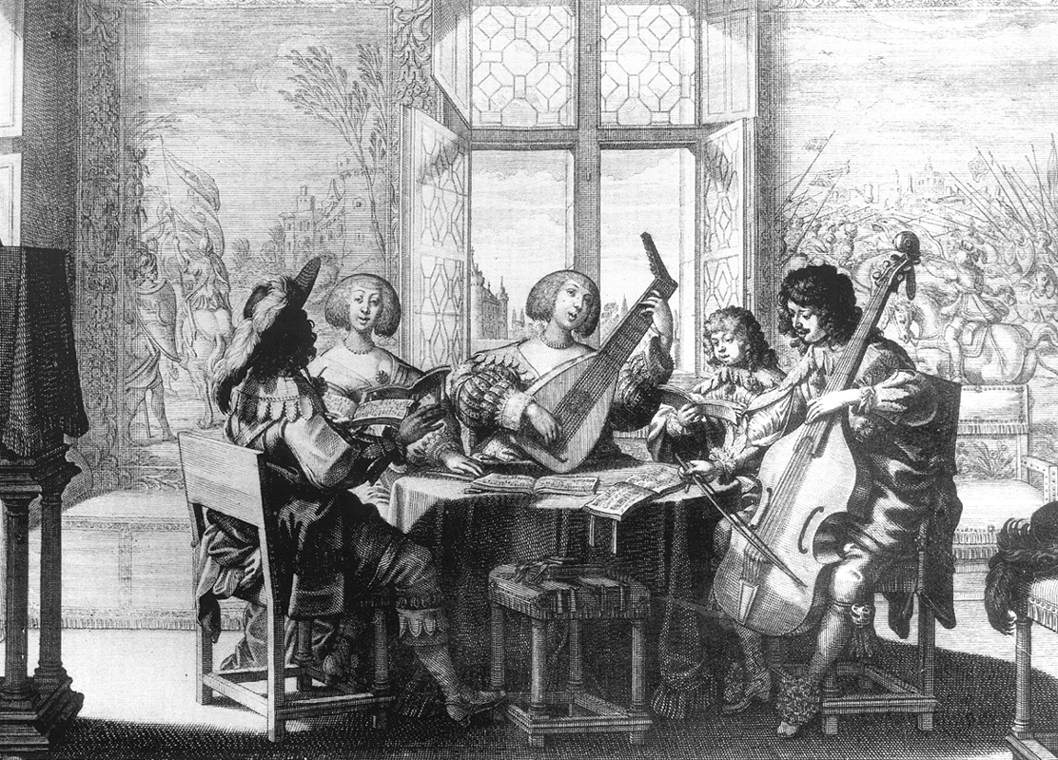 "Les Cinq Sens: L'Ouïe", an etching by Abraham Bosse, c. 1638 With the arrival of Calvinism, music was relatively simple, at least in the parts of France subject to Calvinist influence. In strictly Calvinist areas, the only musical expression allowed was singing of French translations of the Psalms, for instance those written by Goudimel (who was killed in the St. Bartholomew's Day Massacre in 1572). Starting with the 17th century, Italian and German opera was the most influential form of music, though French opera composers like Balthasar de Beaujoyeaux, Marc-Antoine Charpentier, Henri Desmarest, Marin Marais, Jean Philippe Rameau and Jean Baptiste Lully made a distinctive national style characterized by dance rhythms, spoken dialogue and a lack of Italian recitative arias. The Baroque period saw a flourishing of harpsichord music. Influential composers included Jacques Champion de Chambonnières, Louis Couperin, Élisabeth Jacquet de La Guerre, François Couperin. Jean Philippe Rameau, a prominent opera composer, wrote an influential treatise on musical theory, especially in the subject of harmony; he also introduced the clarinet into his orchestras. The Baroque period saw also a flourishing of "Grand Motet and Petit Motet" music. Influential composers included, Henri Dumont, Jean Gilles, Marc-Antoine Charpentier, Henri Desmarest, Michel Richard Delalande, André Campra, and Jean-Joseph de Mondonville. |
バロック音楽 詳細は「バロック音楽」を参照  アブラハム・ボッセによるエッチング「Les Cinq Sens: L'Ouïe」(1638年頃) カルヴァン派の到来により、少なくともフランス国内のカルヴァン派の影響下にあった地域では、音楽は比較的単純なものとなった。厳格なカルヴァン派の地域 では、許された音楽表現はゴディメル(1572年のサン・バルテルミーの虐殺で命を落とした)などによる詩篇のフランス語訳の歌唱のみであった。17世紀 以降は、イタリアやドイツのオペラが最も影響力のある音楽形式となったが、バルタザール・ド・ボージョー、マルク=アントワーヌ・シャルパンティエ、アン リ・ドゥマレスト、マラン・マレ、ジャン・フィリップ・ラモー、ジャン・バティスト・リュリといったフランスのオペラ作曲家たちは、ダンスのリズム、会話 のセリフ、イタリアのレチタティーヴォ・アリアを排除した独特の国民的スタイルを確立した。 バロック時代には、チェンバロ音楽が盛んになった。 影響力のある作曲家には、ジャック・シャンピオン・ド・シャンボニエール、ルイ・クープラン、エリザベト・ジャケ・ド・ラ・ゲール、フランソワ・クープラ ンなどがいる。 著名なオペラ作曲家ジャン・フィリップ・ラモーは、音楽理論、特に和声に関する影響力のある論文を著した。また、彼は自身のオーケストラにクラリネットを 導入した。 バロック時代には、「グランド・モテットとプティット・モテット」という音楽も盛んになった。影響力のある作曲家には、アンリ・デュモン、ジャン・ジル、 マルク=アントワーヌ・シャルパンティエ、アンリ・ドゥマール、ミシェル=リシャール・ドゥラランド、アンドレ・カンプラ、ジャン=ジョゼフ・ド・モンド ンヴィルなどがいた。 |
| Air de cour Main article: Air de cour In the late Renaissance and early Baroque period, approximately from 1570 to 1650 and peaking from 1610 and 1635, a type of popular secular vocal music called air de cour spread throughout France. Though airs de cour originally used only one voice with lute accompaniment,[8] they grew to incorporate four to five voices by the end of the 16th century. Halfway through the 17th century, they switched back again to a single voice. |
エア・ド・クール 詳細は「エア・ド・クール」を参照 ルネサンス後期から初期バロック期の1570年頃から1650年頃にかけて、1610年から1635年にかけてピークを迎えた、エア・ド・クールと呼ばれ る大衆的な世俗的な声楽曲がフランス全土に広まった。エア・ド・クールは当初、リュート伴奏による1声のみで演奏されていたが[8]、16世紀末には4声 から5声の編成に発展した。17世紀半ばには、再び単旋律に戻った。 |
| French
classical music |
フランス古典音楽 |
☆
| 496 | フランク王国初代クローヴィス、キリスト教を国教化 |
| 800 |
シャルルマーニュ(カール大帝)、西ローマ皇帝になる |
| 987 |
フランス王国の成立 |
| 1086 |
アキテーヌ公ギョーム9世即位 |
| 世俗歌曲がさかんになる |
|
| 1198 |
四声オルガヌム「地上のすべての国々はみたり」。準典礼劇「ダニエル」 |
| ca.1300 |
グロケイオ「音楽論」 |
| 13世紀末 |
多声世俗歌曲(シャンソン)の誕生 |
| 1309 |
クレメンス5世、アヴィニュンに教皇庁を開く |
| 1314 |
風刺音楽物語「フォーベル物語」 |
| ヴィトリ、マショーらの活躍 |
|
| 1337 |
百年戦争勃発 |
| 1342 |
教皇クレメンス6世即位。教会で新しい技法の音楽が推進される。 |
| ミサのための多声楽曲の登場 |
|
| マショー「ノートルダム・ミサ曲」 |
|
| 1378 |
教会大分裂の時代(〜1417) |
| 1384 |
ブルゴーニュ公フィリップ・ル・アルディが独自の宮廷シャペルを組織す
る |
| 14世紀末 |
アルス・スブティリオルによる多声シャンソン集「シャンティ写本」がま
とめられる。フランス語(オイル語)シャンソンの時代 |
| 1419 |
フィリップ・ル・ボンがブルゴーニュ公となる |
| イングランド音楽の影響が大きくなる |
|
| 15世紀中 |
ブルゴーニュ公国の宮廷音楽がさかんになり、ジル・バンショワらが活躍 |
| 15世紀後 |
フランス・ルネサンス音楽の隆盛。 デュファイ、オケゲムの活躍 |
| 1498 |
シャルル8世、ルイ12世のナポリ遠征 イタリア・ルネサンス文化の流入 ジョスカン・デ・デュプレの活躍 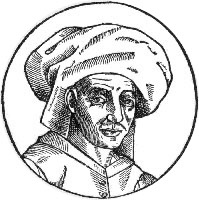 Stile Antico - Josquin des Prez: Ave Maria, Virgo Serena |
| 1515 |
フランソワ1世時代がはじまる(〜1547) セルミジ、ジャヌカンらの宮廷音楽家の活躍 改革派教会の登場 |
| 1528 |
アテニャン、フランス発の活版印刷楽譜集を出版 多声シャンソンの黄金時代 |
| 1543 |
マロによるフランス語訳詩篇出版、作曲家たちに大きな影響を与える |
| 1547 |
アンリ2世時代はじまる(〜1559) |
| ホモフォニックなシャンソンの隆盛 プレイヤード派詩人の活躍 |
|
| 1581 |
最初のバレ・ド・クール(Ballets de cour)「シルセ」 |
| 1589 |
舞踏法「オルケゾグラフィ」出版 |
| 1594 |
アンリ・ド・ブルボン(アンリ4世)の即位(〜1610) |
| ブルボン朝 |
|
| 1600 |
リュート曲集「オルフェの宝」出版 |
| 1610 |
ルイ13世即位 |
| 1624 |
宰相リシュリュー登場 |
| エール・ド・クール、バレ・ド・クールの隆盛 |
|
| 1636 |
メルセンヌの音楽理論書「総合音楽論」出版(〜1637) |
| 1642 |
マザランが宰相の地位を継ぐ |
| イタリア音楽の導入 |
|
| 1643 |
太陽王、ルイ14世即位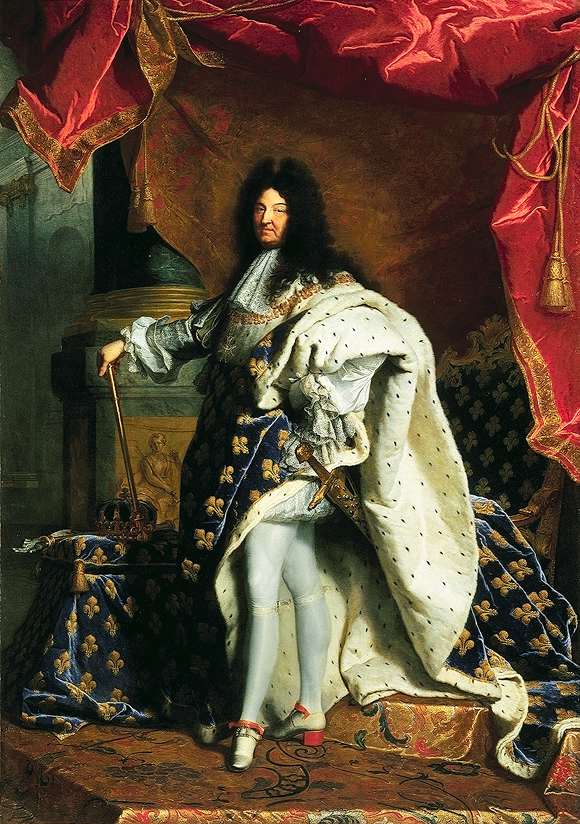 |
| 1647 |
王室のための新作イタリア・オペラ「オルフェオ」初演 |
| 1651 |
12歳のルイ14世が「カサンドルのバレ」を主宰、上演し、踊りを披露
する |
| 1653 |
「夜のバレ」初演 |
| ルイ・
クープランLouis Couperin、シャンボニエールら、クラヴサンclavecin(→チェンバロ)独奏曲の隆盛 Suite in D Major: No. 2, Prélude [non mesuré] |
|
| 1661 |
宰相マザラン死去、ルイ14世親政はじまる リュリが宮廷音楽監督、作曲家に任命される モリエールのコメディ・バレ「うるさがた」上演 |
| 1662 | カヴァッリ「恋するエルコレ」初演 |
| 1664 |
ヴェルサイユ宮殿で初の大祝祭 |
| 1667 |
9歳のドランド(のちの王室音楽家)がメトリーズに入る 教会附属メトリーズの音楽教育が盛んになる |
| 1671 |
初のフランス・オペラ「ポモーヌ」初演 |
| 1672 |
リュリ、王立音楽アカデミー創設の特許状を得る |
| 1673 |
モリエール最後のコメディ・バレ「気を病む男」 リュリ、音楽悲劇「カドミュスとエルミオーヌ」初演 |
| 1680 |
コメディ・フランセーズ誕生、シャルパンティエの活躍 |
| 1681 |
聖職者会議がフランス教会の自立を宣言 |
| 1685 |
フォンテンブローの王令により信教の禁止 フランソワ・クープラン(François Couperin, 1668-1733)が、サン・ジェルヴェ教会オルガニストとなる François COUPERIN - Messe des Paroisses, Cromorne en taille (Anne-Isabelle de Parcevaux, organ) オルガン音楽の隆盛 |
| 1686 |
マレ「ヴィオル曲集第1巻」出版 |
| 1687 |
1687 リュリ死亡 1697 カンプラのオペラ・バレ「優雅なヨーロッパ」初演 |
| 1700 |
フイエ「舞踏記譜法」出版 |
| 1703 |
1703ドラランド(Michel-Richard
Delalande)「王の晩餐のためのサンフォニ」 Michel Richard Dalalande "Simphonies pour le Soupers du Roy" Concert de Trompettes 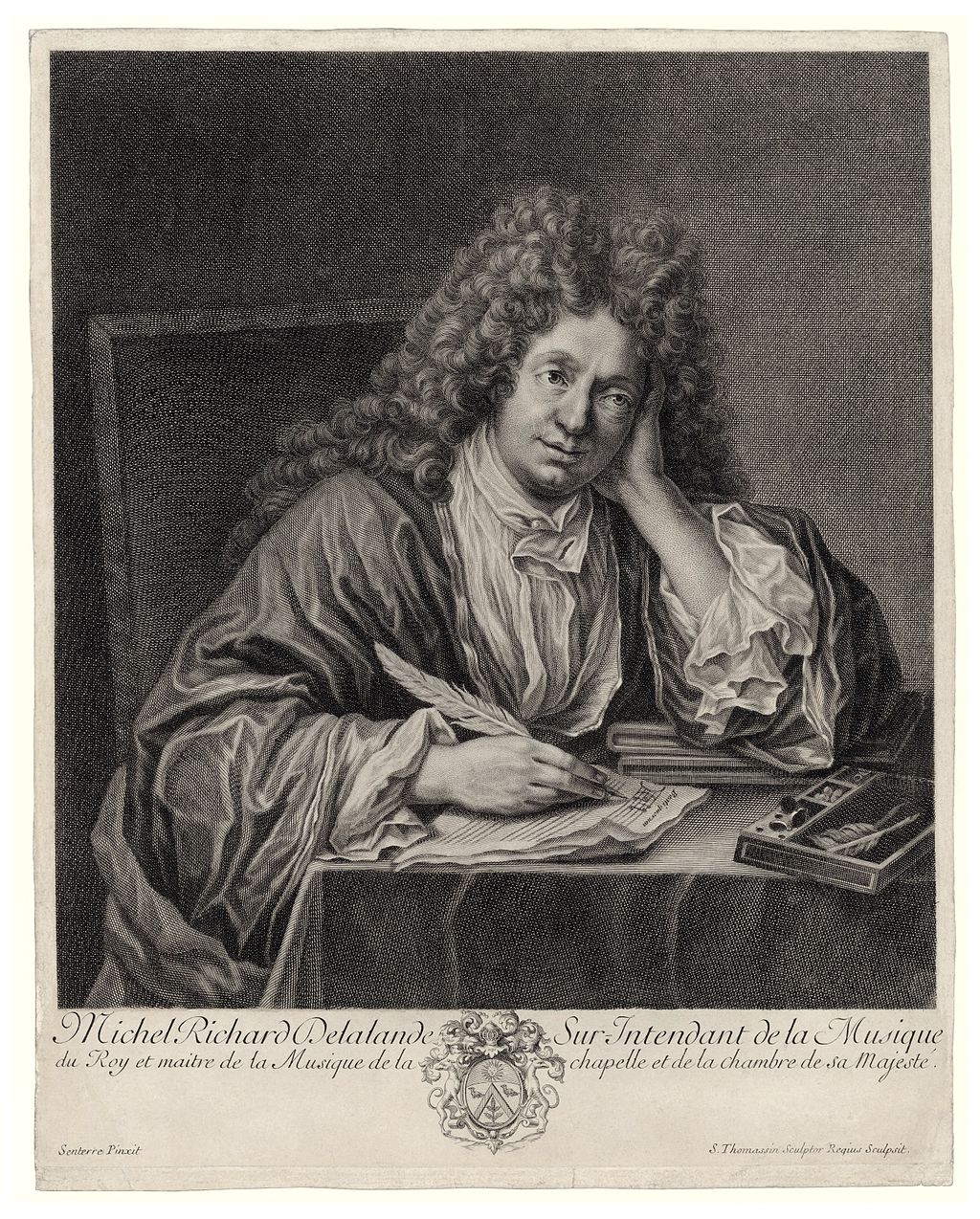 ミシェル=リシャール・ドラランド Michel-Richard Delalande 1704 モラン「フランス・カンタータ」 1706 ラモー、最初のクラヴサン曲集を出版 |
| 1713 |
クープラン「クラヴサン曲集第1巻」出版 |
| 1715 |
ルイ14世死去、ルイ15世即位、摂政フィリップの時代の開始 オペラ・コミック座の誕生 |
| 1722 |
クープラン器楽合奏曲集「王宮のコンセール集」出版 ラモー「和声論」 この頃、カンプラ「レクイエム」作曲 1725 定期的な演奏会コンセール・スピリテュエルがはじまる 1728 プラヴェ「フルートのためのソナタ曲集第1巻」 |
| 1730s |
1734 モンドンヴィル「ソナタのかたちによるクラヴサン曲集」 1735 ラモーのオペラ・バレ「優雅なインドの国々」初演 |
| 1740s |
|
| 1750s |
1750 「百科全書」刊行の開始 1752 ブフォン論争(〜1754) 1752 ルソーのオペラ・コミック「村の占い師」初演 1753 ペルゴレージ「スターバト・マーテル」上演 1757 ダカンのオルガン作品「新しいノエル集」出版 |
| 1760s |
1762 オペラ・コミック座とコメディ・イタリエンヌが合併 |
| 1770s |
1770 王太子ルイとマリ・アントワネットが結婚 1774 グルックのフランス語オペラ「オリードのイフィジェニ」初演 1774 ルイ16世即位。グレトリが王妃付き音楽監督に就任 1777 グルック=ピッチンニ論争 |
| 1780s |
1789 フランス革命、革命歌、各種の祭典のために音楽がさかんにな
る |
| 1790s |
1791 メトリーズの廃止 1792 共和政樹立宣言、ゴセック「自由の捧げもの」オペラ座初演 1793 ルイ16世の処刑 1794 テルミドールのクーデタ、ブルジョア的共和政のはじまり 1795 パリ音楽院の設立 1799 ナポレオン政権掌握 |
| 1800s |
1801 政教条約を締結、カトリックの復権 1803 ナポレオン、ローマ大賞に作曲部門を創設 1804 ナポレオン、皇帝に即位、第一帝政開始 1806 ナポレオン、パリの劇場を8つに制限 1807 メユール「ジョセフ」オペラ・コミック座初演、スポンティーニ「ヴェスタの巫女」オペラ座初演 |
| 1810s |
1814 王政復古 1817 ショロンの初等歌唱学校が政府から認可される 1819 セビーリャの理髪師、パリ初演。ロッシーニ旋風がおこる。 |
| 1820s |
1822 ピアノ製作者エラール、ダブル・エスケープメント・システム
を開発 1823 11歳のリスト、パリに居をさだめる。 1824 シャルル10世即位。ロッシーニ「ランスへの旅」イタリア座で初演 1828 パリ音楽院演奏協会設立、ベートーヴェン作品が人気を博する。 1828 オベール作曲、スクリーブ台本「ポルティチの物言わぬ娘」オペラ座で初演 1829 ロッシーニ「ギョーム・テル」オペラ座で初演。 |
| 1830s |
1830 7月革命、市民王ルイ=フィリップ即位 1830 ベルリオーズ「幻想協奏曲」作曲 1831 ショパン、パリに居を定める 1831 マイヤーベア「悪魔ロベール」オペラ座で初演 1835 ベリーニ「清教徒」イタリアで初演 1835 アレヴィ「ユダヤ女」オペラ座で初演 1836 マイヤーベア「ユグノー教徒」オペラ座で初演 1836 ヴィレム創設の合唱団がパリ市オルフェオン協会となる。全国にオルフェオン運動がひろがる 1837 ベーム・システム開発、近代的な木管・金管楽器の制作がさかんになる。 |
| 1840s |
1840 ドニゼッティ「連隊の娘」オペラ=コミック座で初演 1848 二月革命、第二共和政 |
| 1850s |
1851 ルイ=ナポレオンのクーデタ、第二帝政 1851 リリック座の設立(〜1872) 1852 ニデルメイエールが古典宗教音楽学校を設立 1855 第一回パリ万博. 1855 オッフェンバックのブフ・パリジャン開場 1858 オッフェンバック「地獄のオルフェ」ブフ・パリジャンで初演 1859 グノー「ファウスト」リリック座で初演 |
| 1860s |
1861 3月13日ヴァーグナー「タンホイザー」パリ初演、歴史に残
る大失敗。ナポレオン3世が臨席したにもかかわらず反ワーグナー派の妨害と支持派の対立で収拾がつかなくなった。 1861 コンセール・ポピュレール第一回コンサート 1864 劇場の自由化 1867 第二回パリ万博、正式に音楽展が始まる |
| 1870s |
1870 パリ・コンミューン、第三共和政 1870 普仏戦争はじまる。フランスナショナリズムの隆盛 1871 国民音楽協会設立、1872年サン=サーンスが会長に就任。 1873 コンセール・コロンヌ設立 1875 パレ・ガルニエ(オペラ座)が完成 1875 ビゼー「カルメン」オペラ・コミック座で初演 1876 フォーレ「ヴァイオリン・ソナタ・イ短調」作曲 1878 第三回パリ万博 1879 フランク「ピアノ五重奏曲」作曲 |
| 1880s |
1881 コンセール・ラムルー設立 1886 フランク「ヴァイオリン・ソナタ・イ短調」 1887 ヴァーグナー「ローエングリン」パリ初演、ヴァグナーブーム到来 1887 サン=サーンス第3交響曲オルガン付き、パリ初演 1889 第四回パリ万博、エッフェル塔が完成。アジア音楽が人気をあつめる |
| 1890s |
1894 ダンディら、スコラ・カントルム設立 1894 フォーレ「優しい歌」作曲 |
| 1900s |
1900 第五回パリ万博 1900 シャルパンティエ「ルイーズ」初演 1902 ドビュッシー「ペアレスとメザリンド」初演 1903 ラヴェル「弦楽四重奏曲」作曲 1905 ドビュッシー「海」初演 1905 ラヴェル事件 1905 フォーレ、パリ音楽院院長就任 |
| 1910s |
(未入力) |
| 1920s |
|
| 1930s |
|
| 1940s |
|
| 1950s |
|
| 1960s |
|
| 1970s |
|
| 1980s |
|
| 1990s |
|
| 2000s |
|
| 2010s |
リ ンク
文 献
そ の他の情報
CC
Copyleft, CC, Mitzub'ixi Quq Chi'j, 1996-2099
☆
 ☆
☆